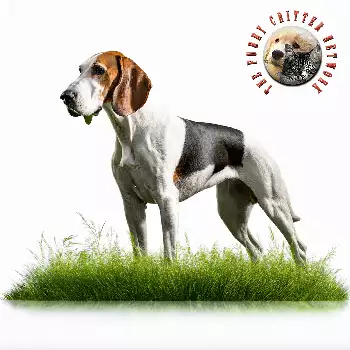Foxhounds integrate into family structures as gentle, loyal members who bring their pack-oriented mentality to human relationships. Their approach to family life reflects their breeding for cooperation and social harmony, making them naturally inclined to include all family members in their social circle. However, their integration requires understanding of their specific needs and characteristics, particularly their exercise requirements, social nature, and communication styles. Successful family relationships with Foxhounds typically develop when families can provide adequate space, exercise, and appreciate the breed's unique qualities.
With children, Foxhounds often excel as patient, tolerant companions who seem to understand the need for gentle interaction with young family members. Their pack mentality extends naturally to viewing children as members of their group deserving protection and companionship. However, their size and energy level require supervision during play, and their enthusiasm for outdoor activities can sometimes overwhelm very small children. Families with active children who enjoy outdoor adventures often find Foxhounds to be ideal companions for hiking, camping, and other family activities.
The breed's relationship with other pets in the household varies depending on the species and individual personalities involved. Foxhounds typically integrate well with other dogs, particularly when introduced properly and given time to establish pack relationships. Their social nature makes them excellent companions for other large, active breeds, and many families find that having two dogs actually simplifies management by providing companionship and exercise partners. However, their hunting instincts may create challenges with smaller pets such as cats, rabbits, or birds unless careful introductions and ongoing management are maintained.
Space requirements significantly impact family dynamics with Foxhounds, as these dogs were bred for extensive exercise and outdoor activity. Families living in apartments or homes without adequate outdoor space may struggle to meet the breed's needs, leading to behavioral challenges that affect household harmony. Rural or suburban families with access to large yards, trails, or open areas typically find Foxhounds much easier to manage and more pleasant to live with. The breed's need for physical activity often becomes a catalyst for increased family outdoor activities and shared adventures.
Training and household management with Foxhounds requires family coordination and consistency, as their intelligence and independence can lead them to test boundaries and find creative solutions to restrictions they don't understand or agree with. Family members need to present a united front regarding rules and expectations, and everyone must understand the importance of secure fencing and leash management. Their tendency to follow interesting scents can create safety concerns that require ongoing vigilance from all family members.
The breed's vocalization patterns affect family dynamics in ways that require preparation and management. Their baying can be quite loud and carrying, particularly when they're excited, detecting interesting scents, or trying to communicate with distant pack members. Families must be prepared to manage this behavior through training and environmental modifications, and neighbors should be informed about the breed's natural vocal tendencies. Some families find the breed's voice charming and distinctive, while others may need to invest significant time in voice control training.
Daily routine establishment becomes crucial for successful family life with Foxhounds, as these dogs thrive on predictable schedules that include adequate exercise, feeding, and social interaction. Families often find that their own routines become more structured and active when sharing their lives with a Foxhound, as the dog's needs require regular outdoor time and physical activity. This can have positive effects on family health and bonding, but requires commitment from all family members.
Long-term considerations for families with Foxhounds include the breed's longevity and changing needs over their 10-13 year lifespan. Young Foxhounds require extensive exercise and training, while senior dogs may need modified activities and increased veterinary care. Families must plan for the financial and time commitments involved in proper care, including potential health issues and the ongoing need for appropriate exercise throughout the dog's life. The reward is a devoted family member whose gentle nature and loyal companionship enriches family life for many years.

